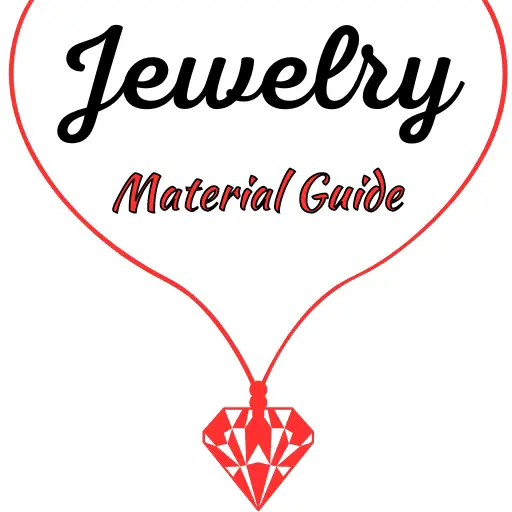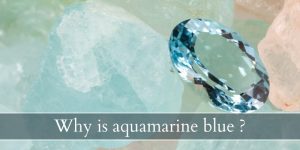Diamonds and white sapphires are easy to confuse at a glance, but one you get a good look at them you start to notice some differences. Both gems have their pros and cons, so choosing between them isn’t exactly easy. Today’s comparison will help you get a better idea of how different and similar diamonds and white sapphires are. There is a gem for everyone out there !

Diamond vs white sapphire
Diamonds are tougher and sparkle much more than white sapphires, but are also at least 10 times more expensive than white sapphires. This can make white sapphire a good option if you’re working on a budget or don’t want to spend too much on the ring. The differences in sparkle clarity, and color tint in diamond and white sapphire is noticeable enough that you can’t use one in place of the other.
Both gems are great for engagement rings and they will both hold dup very well as the years go by. Just don’t expect white sapphire to be as impressive as a diamond because they offer very different looks.
What is a diamond ?
Diamonds are a form of crystallized pure carbon, with trace amounts of nitrogen in them. The nitrogen is what gives diamonds that yellow/brown tint. There are no diamonds without nitrogen, just diamonds with very little nitrogen.
These beautiful gems have fascinated people for centuries, and they are currently the #1 engagement ring stone. There are alternatives stones rising in popularity, but diamonds still reign supreme. They have the sparkle, the durability, and the charm that made entire generations appreciate them.
What is a white sapphire ?
Sapphires are a form of corundum, which is colorless or white on its own. Iron and titanium add a blue color, chromium adds red. When it comes to white sapphires, there is very little to no trace amount of any other element, so the corundum remains colorless, or a very, very light grey/blue.
White sapphires may be subject to heat treatment to improve clarity. The tiny cloudy inclusions within sapphires – usually rutile – tend to dissolve during this process. Most sapphires on the market go through this process, regardless of the color.
Diamonds are tougher than white sapphires
Diamonds are tougher than sapphires, and the Mohs scale is only an approximation of this difference. The Mohs scale is not logarithmic, it’s quite arbitrarily made but has been in use for several decades.
So a diamond’s 10 out of 10 is not 1 whole point stronger than white sapphire’s 9 score. Diamonds are actually 4 times tougher than white sapphires (or any sapphire for that matter). And sapphires are about twice as strong as emeralds which score an 8 on the Mohs scale.
This makes diamonds the toughest gemstone available, and it also means it can survive being passed down several generations without any issues.
White sapphires are still very tough, and they will still look great ever after several decades or 2-3 generations of wear and tear. They may need a bit of polishing after that time though.
Both diamond and sapphire are great for engagement rings
If your mind is set on an engagement ring but not sure if you should opt for a diamond or white sapphire, know that both will hold up to wear and tear very well. They have different light performances and cost issues, but durability is very high in both.
White sapphires are more affordable than diamonds
Budget is always an issue when buying diamonds because, well, they are the most expensive gemstone. White sapphire are far more affordable than diamonds, since there is less demand and they offer a different look. Similar, but still different.
While a 1 carat diamond can be anywhere from $7,000 to 12,000 depending on color and clarity, a 1 carat eye-clean white sapphire usually sells for an average of $800 per carat. Of course, you can find white sapphire for less or for more than that, depending on their cut quality, whether they’ve been heat treated or not, and also their origin.
Still, overall you’re going to get a much more affordable engagement ring with a white sapphire than a diamond. Different looks, but also very, very different price points.
Read also: Diamond Pave Band Guide
Diamonds sparkle more than white sapphires
Let’s tune into what we meant by different looks. You buy a diamond for its sparkle, its fire and brilliance, and the tradition that comes along with a diamond. The most common diamond is the round cut diamond, and it’s the one you usually see in engagement rings. They’re cut to maximize sparkle and be absolute showstoppers.
White sapphires can’t do that, at least not as well as a diamond can. White sapphires don’t sparkle as much as a diamond does, even if you were to cut the the exact same way. This is due to a combination of lower refractive index, and also an innate cloudiness of sapphires of any kind, plus its slightly lower quality luster (vitreous, unlike diamonds adamantine luster).
This doesn’t mean white sapphires are completely dull. But it does mean they sparkle less, and when they do sparkle it’s more brilliance and silvery sparkles than fire and rainbow colors. A white sapphire in direct sunlight will look more like a diamond in diffused office lighting.
Do white sapphires turn cloudy ?
No, sapphires do not turn cloudy in time since they have a very hard time getting scratches, and their internal composition does not change. However a white sapphire may accumulate dirt in time and this can turn it cloudy. A quick, simple brushing with a toothbrush and warm soapy water or toothpaste is enough to bring the shine back.

That being said, remember that a white sapphire will always look a bit cloudier than a diamond. It’s just the way sapphires are, and it’s also due to the vitreous vs adamantine luster. Adamantine luster reflects 100% of light back, exactly like a mirror. Vitreous luster is like bouncing light off ice or glass. Not all of it comes back and it can look a bit smudged sometimes.
White sapphires have a blue-grey tint, diamonds a yellow tint
There is always a very slight tint in both diamond and white sapphires. Most commonly you’ll find diamonds with a yellow tint, which is what gives them that warm color. White sapphires usually have a grey-blue tint to them, some more than others. Of course, there are diamonds with a grey tint and there are white sapphire with a yellow tint. But they are much rarer.
So, if you’re ever comparing a white sapphire and a diamond head-on, you’ll notice the sapphire has a cooler shade of white reflection than the diamond. Sometimes this can translate into a noticeable grey tint when looking at the sapphire face-up.
Can you use white sapphire instead of diamond ?
The differences between white sapphire and diamond are big enough that people will notice you’re trying to pass off a white sapphire as a diamond. Both are great for engagement rings, but don’t try to fool anyone into thinking the sapphire is in fact a diamond. The difference in sparkle and brightness is large enough to be noticeable.
If you’d like to wear something else instead of diamond, and white sapphire isn’t up your alley, there are other gemstones your could try. Here’s a few of them.
Lab grown diamonds, moissanite, and cubic zirconia if you want to go for something sparkly. When diamonds are just too much, you can go for the lab-grown gems. Lab-grown diamonds are half the price of a natural diamond and offer the same look. If you’re working with a smaller budget then moissanite and cubic zirconia are also good choices that are sometimes hard to tell apart from a diamond.
Moissanite will hold up better in time than cubic zirconia since it’s far tougher (9.25-9.5 vs CZ’s 8) and when cut right (like crushed ice) moissanite won’t have an overabundance of fire. Cubic zirconia is far, far cheaper than moissanite but will scratch easier.
Quartz or Herkimer diamonds if you want something clear and natural. If you’d rather get a white gemstone that is natural and not lab grown, your options are pretty slim. You’ve got quartz, which is a fairly soft gemstone (7 out of 10 on Mohs scale), and it’s essentially a completely colorless amethyst. Herkimer diamonds are another version of quartz, but they grow in a slightly different hexagonal crystal structure, and get their name from the Herkimer mine in New York state.
The downside to quartz of any kind, even clear quartz, is that it won’t sparkle. It will throw flashes of white light but won’t really sparkle. And, because of its incredibly high clarity it will look like a colorless aquamarine, that is see-through.

I’m the main author for jewelrymaterialguide.com. I started this site after we did tons of research before our wedding and noticed that there is information about rings, jewelry, and so on that is really hard to find on the internet.






